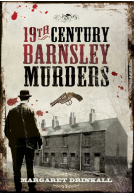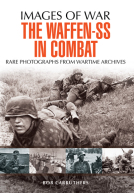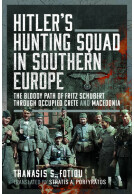The Story of Sheffield at War 1939 to 1945 (ePub)
Imprint: Pen & Sword Military
File Size: 9.0 MB (.epub)
Pages: 204
Illustrations: 50
ISBN: 9781473884328
Published: 3rd November 2016
| Other formats available - Buy the Hardback and get the eBook for free! | Price |
|---|---|
| The Story of Sheffield at War… Hardback Add to Basket | £19.99 |
This is a unique account of the impact that the Second World War had on the city of Sheffield. Soon after the declaration of war, the government and the people of Sheffield realised that the Germans would make the city one of their prime targets, due to the importance of the steel industry. Also, for the first eighteen months of the war Sheffield had the only drop hammer in the country, which was capable of producing Rolls Royce crankshafts for Spitfire and Hurricane aircraft.
Using contemporary diaries, letters, police accounts and other archive material, this book reveals how, despite heavy bombing, the people of Sheffield refused to be intimidated.
It looks at the events that were happening in the city during the countdown to the war, such as the evacuation of the children not only to other safer districts, but to the Dominions, and the development of the Sheffield Home Guard, who started out as 'Dads Army' but were sent to London to relieve its Home Guard when the capital was under heavy fire from German rockets. Also included is a description of the protection of the dams above Sheffield and how the Ladybower reservoir was used as a training ground for the 'Dambusters'. Finally, there are accounts not only of Sheffield men who were taken as prisoners of war, but how the police dealt with the German and Italian prisoners at Lodge Moor Camp.
1945 is a unique account of the impact that the war had on the city of Sheffield.Soon after the declaration of war, it was realised that the Germans would make the city one of their prime targets, due to the importance of the steel industry. Also,for the first eighteen months of the war Sheffield had the only drop hammer in the country, which was capable of producing Rolls Royce crankshafts for Spitfire and Hurricane aircraft. Using contemporary diaries, letters, police accounts and other archive material, this book reveals how, despite heavy bombing, the people of Sheffield refused to be intimidated.It looks at the events that were happening in the city during the countdown to the war, such as the evacuation of the children not only to other safer districts, but to the Dominions, and the development of the Sheffield Home Guard. Also included is a description of the protection of the dams above Sheffield and how the Ladybower reservoir was used as a training ground for the 'Dambusters'. Finally, there are accounts not only of Sheffield men who were taken as prisoners of war, but how the police dealt with the German and Italian prisoners at Lodge Moor Camp.
Village Publications
It is always good to hear and read from a personal and local history perspective especially when trying to make sense of the horrors and events endured throughout World War II in the UK.
Richard Latham
Sheffield has a special place for me as it is where my Wife was born and alot of her family still live in that great city. I therefore had some delight to read of familiar places, buildings and streets as well as reflected pride as I learned of the heroism and courage of its people in time of War.
The book is divided into a number of chapters detailing different aspects of life from the blackout and its own Blitz to the invasion of the City by US GI's. There is also a comprehensive index in case you missed anything or want to look at something in particular.
I was impressed to read about the many innovations that had to be made in terms of Civil Defence and the strength of the people of Sheffield to muddle through, business as usual, walking to work when transport was disrupted and minimising time lost in the factories contributing so much in the war effort.
Sheffield is very proud of its heritage and is a steel city - from this account it would appear that its men and women share those qualities in abundance.
It was interesting to read about plans and steps taken to move children at risk from bombing. I was amazed by the amount of homelessness that raids caused and the local initiatives made to counter these issues and meet need with rest centres, grants and sharing homes across the city. It was also gratifying to note that Sheffield often led the way and its social relief and practical steps were copied across the country.
It seems quite heartless to read as early as December 1940 civillian targets were bombed with a range of insidious ordnance, high explosive bombs, incendiary devices and time detailed bombs to maim and kill rescuers.
I also particularly enjoyed chapters on the role of women, the police and Royal visits to the city.
You cannot take in the mega picture so a look at a strategic city like Sheffield was a real eye-opener and enabled me to understand more about the conflict, how it impacted on ordinary people and why we should be proud of our past.
Full of pictures and eye-witness accounts this is a well written book for anyone interested in this subject or local history.
About Margaret Drinkall
Local historian Margaret Drinkall retired in 2009 in order to concentrate on her passion for researching and writing. Her recent books include Rotherham Workhouse and true crime titles relating to Sheffield and Rotherham. Background to Margaret's writings and interests can be seen on her website, margaretdrinkall.co.uk, which also offers publication advice to new writers.




















